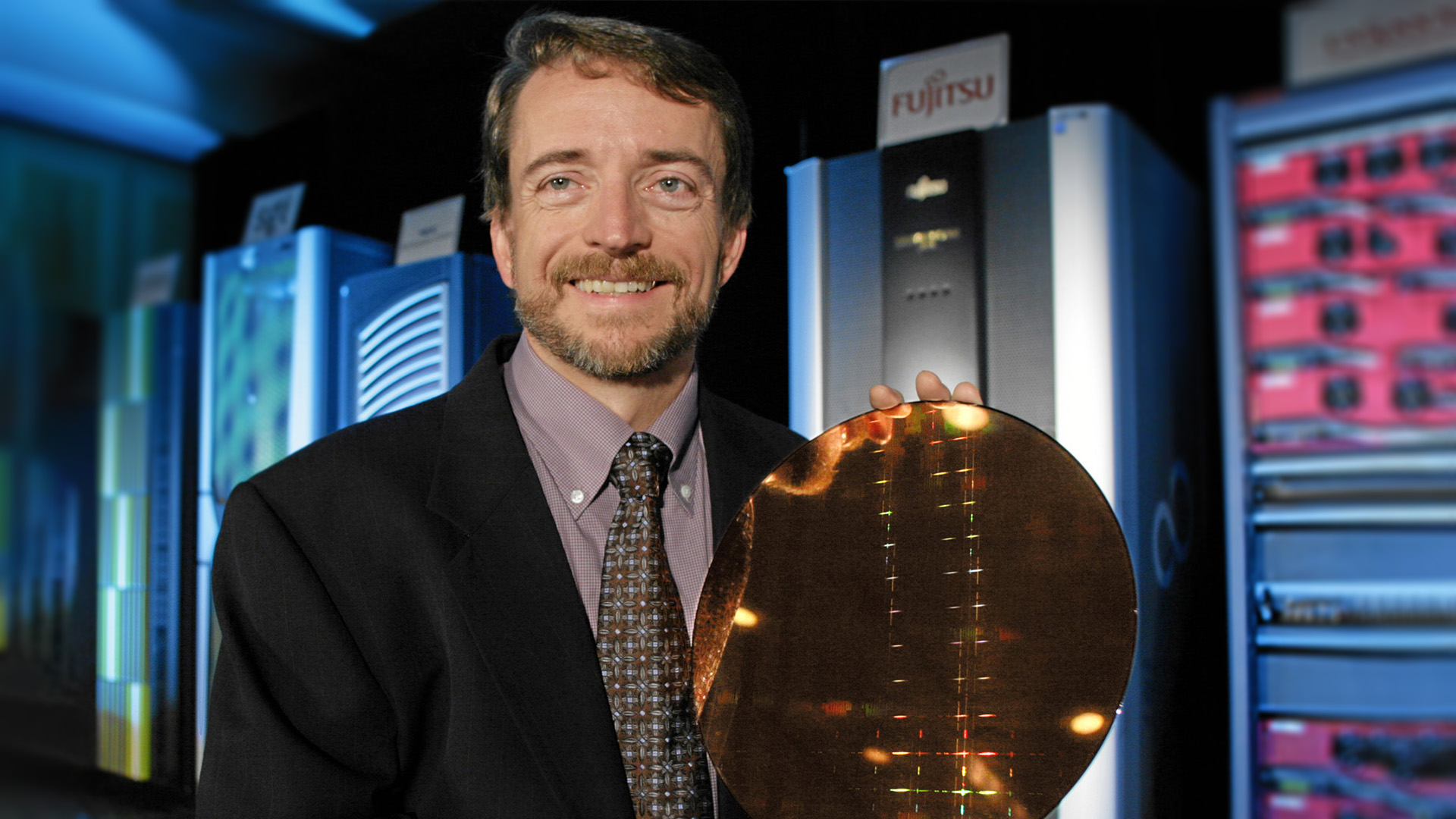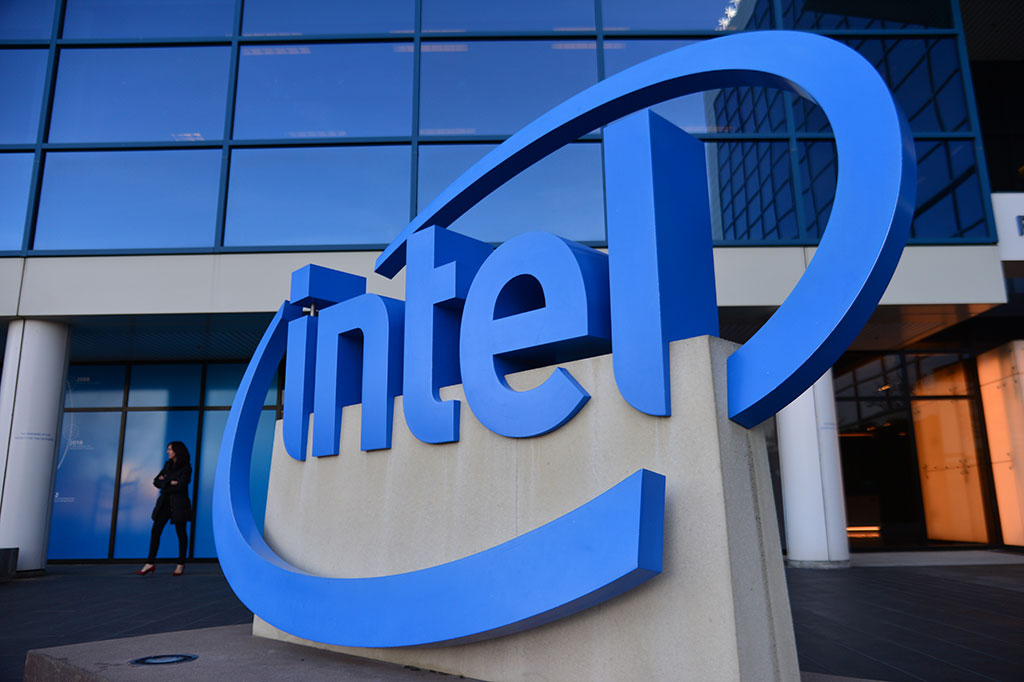Why Pat Gelsinger will kick Intel back into shape
Return of the engineer...

Pat's back and it couldn't be better news for Intel. And what's good for Intel is usually good for PC enthusiasts and in turn gamers. The 'Pat' in question? That'll be Pat Gelsinger, Intel's freshly minted CEO and an engineer through and through. If anyone can fix Intel's problem, it's Gelsinger, right?
The financial markets seemed to think so, with Intel's share price immediately jumping seven percent on the news. For journalists of a certain age, of course, Gelsinger is best known as the beaming, relentlessly upbeat face of the Intel Developer Forum, the now-defunct engineering focussed trade fair otherwise known as IDF and a throwback to an age where Intel was the unambiguous world leader in chip technology.
Gelsinger's last tenure at Intel lasted fully 30 years ended in 2009, at which point he had risen to Chief Technology Officer and overseen Intel's resurgence to total market dominance with the Core architecture in the mid 2000s. Lest you have forgotten, the smash hit Sandy Bridge family of CPUs was released in 2009, just as Gelsinger's Intel tenure was ending.
Such are the lead times involved in chip production, Gelsinger's fingerprints were all over Intel's CPUs for several years hence. It's very likely even Skylake, another smash hit and the architecture that still underpins Intel's current desktop and server processors, is essentially a product of the Gelsinger era.
For what it's worth, Gelsinger is also widely viewed a both a brilliant engineer and one of the good guys. More recently, of course, Intel has been struggling. To be clear, Intel remains by far the biggest beast in PC processors. It's hugely profitable and can barely keep up with the demand for its x86 CPUs, particularly for the server computers that power the internet, the cloud and other enterprise applications.

But Intel's well publicised problems with its previous world-beating chip production technology are beginning to do real damage. Intel's 10nm node is at least five years behind schedule, an eternity in an industry used to technological advancements so regular and reliable, they spawned the notion of Moore's Law, the idea that transistor density in computer chips doubles every two years.
Things are bad enough that Nvidia overtook Intel as the US's largest chip maker back in July, a very significant milestone. At the same time, many observers reckon Intel has become far too marketing led. The symptoms of that are widespread, including the often baffling structure of its product line ups and branding seemingly designed to befuddle even the most committed technophile, never mind typical consumers buying PCs and laptops.
The biggest gaming news, reviews and hardware deals
Keep up to date with the most important stories and the best deals, as picked by the PC Gamer team.
Intel now routinely rolls multiple architectures into a single generational branding banner, to the extent that any given Intel 'Xth' Generation Core processor no longer has any meaning. At one point Intel was selling fully three different CPU architectures under a single generational brand. Likewise, how anyone can think the likes of Intel® Core™ i5-1130G7 constitutes snappy, consumer-friendly branding is anyone's guess. If nothing else, here's hoping that sort of nonsense ends under Gelsinger.


Best CPU for gaming: the top chips from Intel and AMD
Best graphics card: your perfect pixel-pusher awaits
Best SSD for gaming: get into the game ahead of the rest
The way Intel has segmented its products, variously enabling and disabling features like HyperThreading while also locking out overclocking from all but certain premium price CPU products has also smacked of the sort of anti-customer cynicism that results from operating as a near monopoly over the years.
However, with AMD going from strength to strength that monopoly is under real threat. Likewise, the emergence of ARM-based chips, including Apple's M1 processor and custom chips commissioned by both Amazon and Google to power their cloud services and machine learning efforts, threaten to decimate Intel's core markets of client and server computers.
Related to all that are reports of cultural decline and an 'exodus' of engineers, most notably Jim Keller, seen by many as the best CPU designer of his generation. Things at Intel are now seen as so parlous that its ability to manufacture its own chips in now being questioned and the latest rumours indicate that it will being farming out CPU manufacturing later this year.
Put simply, Intel needs to get its house in order, and fast. It's that fast bit that might be the problem for Gelsinger. Intel remains a publicly listed company, so our main doubts don't involve Gelsinger's abilities but rather the market's propensity for actually giving him a chance. Intel is a huge ship and it will take years to turn. With analysts picking Intel's performance apart quarter by quarter, month by month, week by week, the question is whether Gelsinger will be given enough time to make a real impact.
Engineering-led solutions in particular will take an awfully long time to deliver. But engineering solutions are what Intel desperately needs. Realistically, the next five years are already largely baked in from an engineering and product perspective. It'll only be after that kind of time frame that we'll see the full impact of Gelsinger's influence on the chips inside our PCs. If he can survive that long, the future for Intel and for the PC in general could be very bright indeed.

Jeremy has been writing about technology and PCs since the 90nm Netburst era (Google it!) and enjoys nothing more than a serious dissertation on the finer points of monitor input lag and overshoot followed by a forensic examination of advanced lithography. Or maybe he just likes machines that go “ping!” He also has a thing for tennis and cars.

